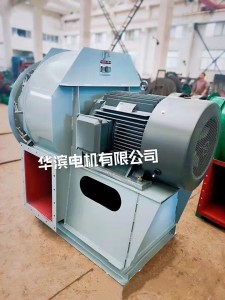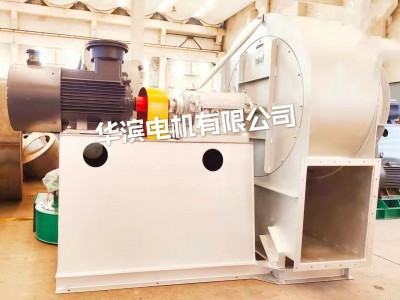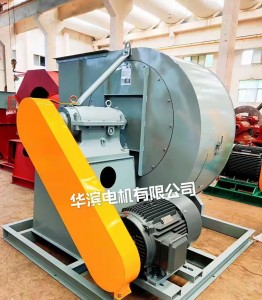Broadly speaking, motor losses can be divided into mechanical losses or electrical losses. Mechanical losses mainly come from bearing friction and any wind resistance relative to the rotating rotor. Pure friction losses are linear functions of speed and are a small part of the total losses of a typical PM or induction AC traction motor.
Wind resistance, the air displacement of any rotating part in a motor, is often one of the larger losses of the total loss, and minimizing the effective frontal area can bring huge gains in reducing wind resistance losses. Motors with smooth rotors, such as the preferred permanent magnet and induction AC motors in electric vehicles, will have less wind resistance loss than motors of the same size with windings in their rotors (such as all DC and wound rotor AC motors).
Electrical losses can also be divided into two broad categories, traditionally referred to as “copper” and “iron”, where the conductor of the motor is made of aluminum and the magnetic structure/frame is made of steel. Copper loss includes any power consumed to generate a magnetic field. This includes rotors in ac induction motors, any additional armature current required to achieve a weak magnetic field in a permanent magnet AC motor, more significant resistance losses, and less significant AC losses (from skin and proximity effects).
Resistance losses, also known as I2R losses, tend to dominate electric vehicles’ motors, which often run at high current and low RPM. In this case, the product of RPM and torque i.e. the total motor power is very low, I2R does not care about the RPM (voltage) component, so when starting the load from complete stop, the efficiency of the electric car’s motor will be very poor.

The frequency from DC to light produces pure resistance losses, while the skin effect and proximity effect can be considered as resistance losses increasing with frequency. Skin effect is the tendency of the current to become more and more confined to the periphery of the conductor as it increases in frequency, resulting in tiny loops of current induced in the wire by the alternating current flowing through it (eddy current). This eddy current loop is proportional to the magnitude of the source current and also to the rate of change of the magnetic field (i.e. the frequency of the source current). These eddies block the flow of current in the center of the conductor and add current to the periphery, which is why the current is increasingly constrained by the periphery.
Skin effect is usually the solution is to a large conductor is divided into many small wire insulation but parallel to each other, but this will cause the proximity effect more loss, this is the same as basic skin effect, but it is caused by alternating current from the nearby other conductor eddy, basically, the winding layer number, the more the higher loss of proximity effect.
Eddies occur because any time-varying magnetic field induces current in any nearby conductor, including the source conductor. A magnetic field that varies over time induces a voltage in nearby conductors, including itself, and that voltage causes current to flow in a loop around the source conductor. For a given interval distance, loop area, and rate of flux change, the induced voltage is fixed, so the current generated will be inversely proportional to loop resistance and proportional to loop area and source current frequency. Thus, the eddy currents in better conductors such as silver and copper are higher than in poorer conductors such as electrical steel or ferrite (which is almost an insulator). Electrical steel is an iron-silicon alloy specifically designed to maximize bulk resistivity without undue damage to its magnetic properties, such as hysteresis losses and saturation flux density.
The absolute resistivity of electrical steel is quite low, and the bulk resistivity of ferrite is very high, but it also has a much lower saturation limit (typically 0.35t versus 1.3-1.5t), making it less viable for use in motor armatures. Fortunately, it is entirely possible to reduce the loop area by simply breaking up an entire structure into a stack of insulated sheets (usually with a thin paint or oxide coating). The thinner the laminates used, the lower the eddy current losses, and as the laminates get thinner, their insulating coating makes up an increasing proportion of the total thickness, so there is a practical limit to the thickness of the laminates used.
The final hysteresis of iron loss is basically the resistance to changes in magnetization direction or flux density. The armatures in all motors are excited by ac current, whether provided by external inverters or brushes and commutators, whose magnetic circuits repeatedly experience large fluctuations in flux density between opposing polarities. Magnetic materials that can withstand such operations need to be “soft”, that is, easily magnetized (low coercivity) while not retaining magnetic moments (low remanence). In contrast, materials that are difficult to magnetize (and demagnetize) are classified as “hard” materials, and they tend to make good permanent magnets. Hysteresis loss is basically a measure of how soft a magnetic material is, and it depends on the flux density.
conclusion
Finally, there are various “stray” losses, most notably flux leakage, which is basically any flux that doesn’t connect the rotor and stator together. It doesn’t do any useful work. This unconnected flux is also subtracted from the effective AC voltage that energizes the armature, and it converts into inductance. The final loss mechanism considered here is common mode capacitive coupled currents, which tend to have small actual power losses but can corrode bearings and damage the insulation on the phase windings, as well as cause vehicles to fail EMI/RFI radiation tests






